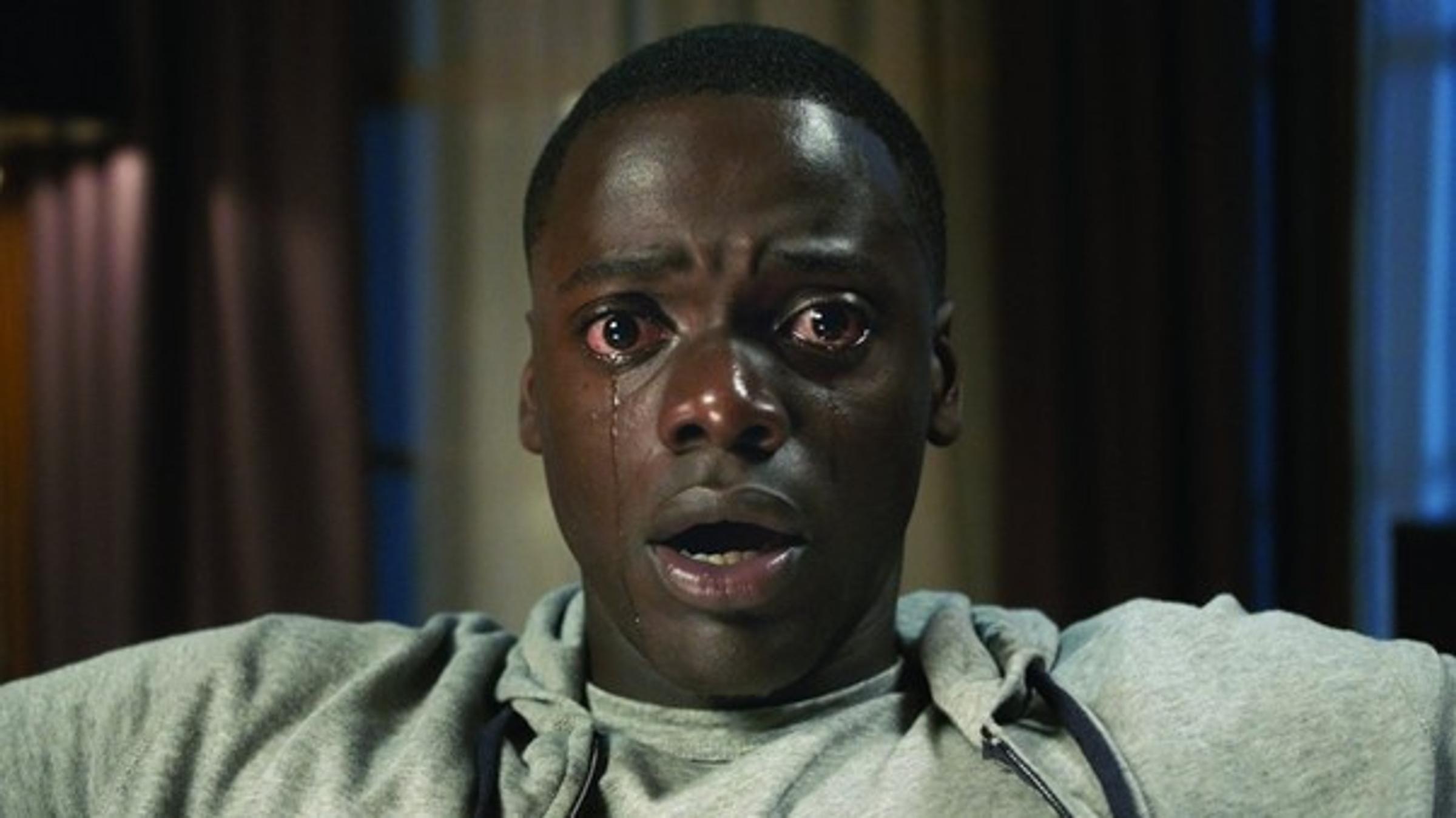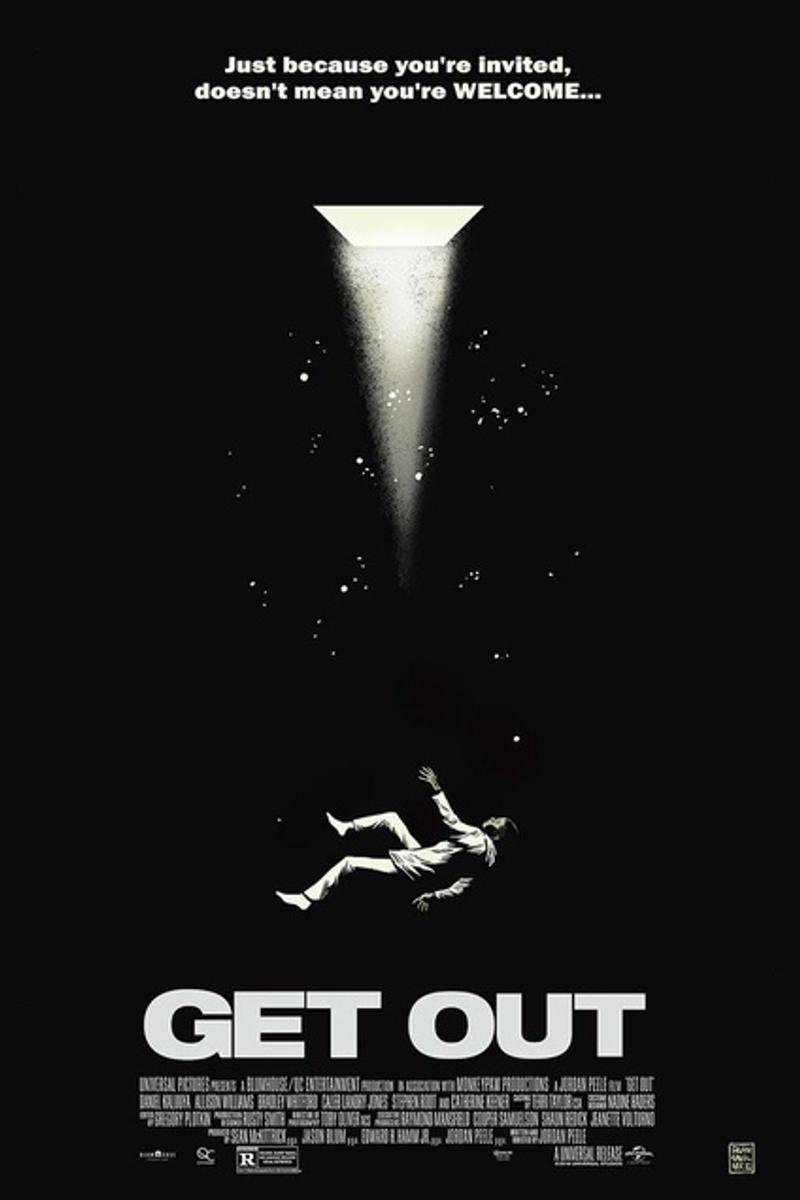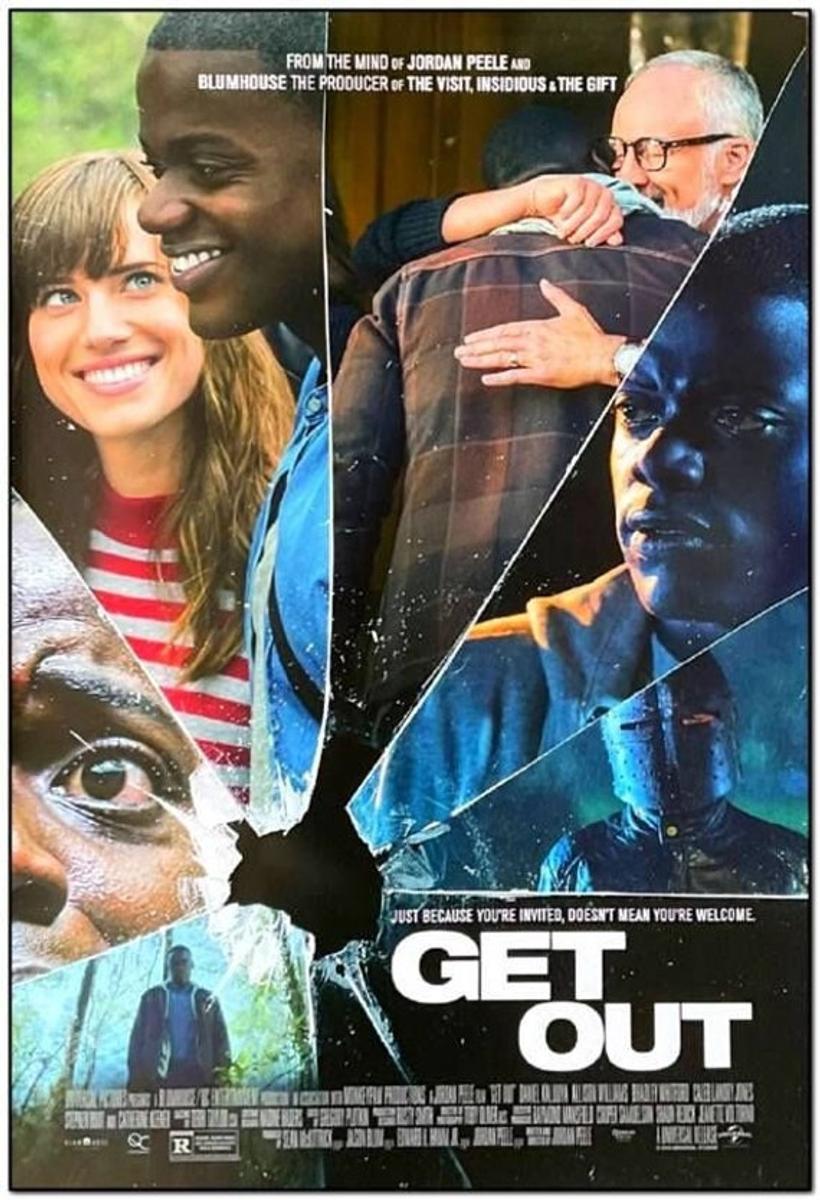Essay Writing for Change
Universal Pictures 'Get Out' directed by Jordan Peele

Essay Writing for Change
Universal Pictures 'Get Out' directed by Jordan Peele
This semester, Year 10s have been working on their analysis skills in English: “Essay Writing for Change”. In class, we have focused on using film techniques to analyse Jordan Peele’s 2017 film, “Get Out”. Students practiced writing different kinds of sentences, and developing greater cohesion in paragraphs. We analysed symbols and motifs in the film, in particular Peele’s use of “The Sunken Place” to represent the effects of racism. Students have produced eloquent and considered essays and have exceeded their own expectations of what they can write.
Here are some extracts from some students essays on the topic “How does Jordan Peele teach white people about racism in “Get Out”?




Simon Wunderlich (Introduction)
In 2017, Jordan Peele released ‘Get Out’, a comedic thriller centred around Chris, an African American photographer, meeting his girlfriend's racist relatives. On closer inspection, this film is a critique on the role of racism in modern society and acts to educate white people on how to recognise and act on it. He does this by portraying culturally white ideas or scenes that the white audience can relate to from the perspective of a person of colour. He shows this through clever direction and the use of common tropes to efficiently convey his message. He puts Chris in familiar white scenarios to display the difference in treatment, perception and worldview toward people of colour. Peele also uses plot points to allegorise issues in the real world to bring about attention, awareness, and change.
Danika Stamp
Privilege and Power Dominance
The Sunken Place represents a place in society where people of colour are marginalised and powerless. Missy’s use of the singular word ‘sink’ causes Chris to involuntarily fall into the Sunken Place, and the loss of all his physical ability demonstrates Missy’s complete control over him, referencing the constitutional control over people of colour and the institutional structures that create limitations over them. Peele displays the Sunken Place as a dark, soundless void which acts as a metaphor for the segregation of people of colour within society. The abrupt stop of all background music as Chris falls, demonstrates the feeling of social isolation, segregation as well as the silencing of free speech and political freedom. The TV like perspective that viewers see Missy through further reiterates Peele’s message of separation or detachment, but also the power dominance Missy has. The angle of the camera is pointed up so that it appears Chris is looking up at Missy, and Missy down on Chris. Another moment where power dominance is clearly visible is when Chris is asked by a cop for his license even though Rose was the one driving. Rose, being a white woman, questions his request without fear while Chris reassures her that it is ok and complies but is clearly uncomfortable. Peele draws attention to systemic racism, racially motivated profiling and police brutality, and gives the viewers insight on the feelings of fear people of colour have for their lives in situations white people do not. Peele illustrates the power dominance white people think they need or are entitled to over people of colour. Peele uses the sunken place to explain visually to viewers what racism and social isolation feels like for a person of colour.
Matilda Sekhon
From the opening moments of the film, we see a world in which being a black man in a predominantly white environment is a horror of its own. Jordan Peele uses the opening scene to convey the feeling of fear that a person of colour experiences. The film is seeking to drive the audience to feel what an African American person may be feeling, while undertaking a simple or safe action, such as walking down a road at night. When Andre is walking down what seems to be a safe, wealthy, suburban street that doesn’t look like any harm could occur, he is apprehensive, therefore triggering the audience to also feel apprehensive. Peele displays the state of terror by using contrast, he displays two elements in a scene are contrasted and it creates a chilling, uneasy feeling. An obvious indication of this is the contrast between the mise en scene and the lighting. While the street that Andre is walking on looks like a safe and peaceful environment, the lighting is dark and shadowy, and that contrast is unsettling. This is also shown with the contrast of the acting and the sound. The acting was very frightening, as an innocent man has just been violently abducted, but the music playing over this disturbing sight, is a cheerful, comedic, old fashioned tune. These out of place contrasts make the audience feel uncomfortable and disturbed, and puts them on edge for the rest of the film. It also establishes an ongoing distrust between the audience and the story throughout the film. After the car drives off, the set is exactly as it was before. Untouched, undisturbed, as if nothing had happened. This scene is a metaphor displaying how racism is ignored by society. The joyful music also seems to be trying to cover up the horrors of what this young black man has gone through. This could represent the lack of justice that African American people achieve when they experience brutality, which adds to the fear that they experience, with no trust in the system that should be protecting them. Jordan Peele creates an excellent cinematic example in illustrating to the audience just how terrifying racism is, and although he has chosen to display this in a dramatic horror film, he has also shown how frightening a simple action can be for a person of colour.
Ken Furukawa
Peele helps white people understand casual racism and the feeling of being the ‘odd’ one out by utilising the acting in the garden scene. It is hard to call out someone when they are casually racist because they think they aren’t offending anyone, and partly say it to justify that they ‘aren’t racist’. In the Garden scene the guests say things that objectify Chris, or things out of context, that not only make Chris feel awkward, but also makes the audience feel awkward as well. “I know Tiger”, “so is it true? The love making. Is it better?” as the women is feeling his bicep. Chris’s acting implies that he feels not only awkward in this scene but also powerless, because he is outnumbered. He shows his resignation to racism and powerlessness. When these things are happening daily, it is clear one will feel “odd” and different, and it is even harder to speak up and call someone out on it.
Ed Hirst
Peele utilizes ‘The Sunken Place’ to represent the marginalisation or sidelining of Black people in society. We first experience The Sunken Place when Missy hypnotizes Chris on his first night at the Armitage’s, after encountering Rose’s grandpa. Missy uses a teacup and a spoon, a symbol of civility and privilege, to trap Chris inside of his own mind. These motifs could represent the use of power from a person in a higher position to marginalize, exclude and disparage Black people in a modern society. Peele formed ‘The Sunken Place’ as a sort of mental void in Chris’ mind, dark, alone, and inescapable. Within The Sunken Place, Chris can see Missy far off in the distance, straight above him. Peele’s construction of The Sunken Place emphasizes that by physically looking down at Chris, Missy was also figuratively looking down on Chris. Mise en Scene, lighting and camera techniques all contribute to The Sunken Place, with wide angles showing that vastness of The Sunken Place, the darkness showing that Chris is alone, and the Mise en Scene shows that yet again, Chris is by himself. These ideas are all part of marginalisation, which is what Peele wanted to convey to the audience through The Sunken Place.
Riyana Wellings
Cotton, often associated with slavery and suffering, becomes a symbol of empowerment when Chris uses it to save himself. During Chris’s ‘therapy session’ he picks at the arms of his chair, this is a response to show how uncomfortable he is especially when Missy brings up the trauma and guilt surrounding the death of his mother. When he is sent to the sunken place for a second time he picks at the chair again, but this time it is filled with cotton, which is highlighted with a close up shot. This ‘picking at the cotton’ is a direct reference to slavery and the work that enslaved people were forced to do. Cotton and cotton fields became a symbol of black oppression and white brutality, but Peele uses this symbol in an entirely different way, having Chris save himself by plugging his ears with it. Cotton has suddenly been turned from a reminder of slavery to a way for Chris to empower himself and eventually get free of his white captives.